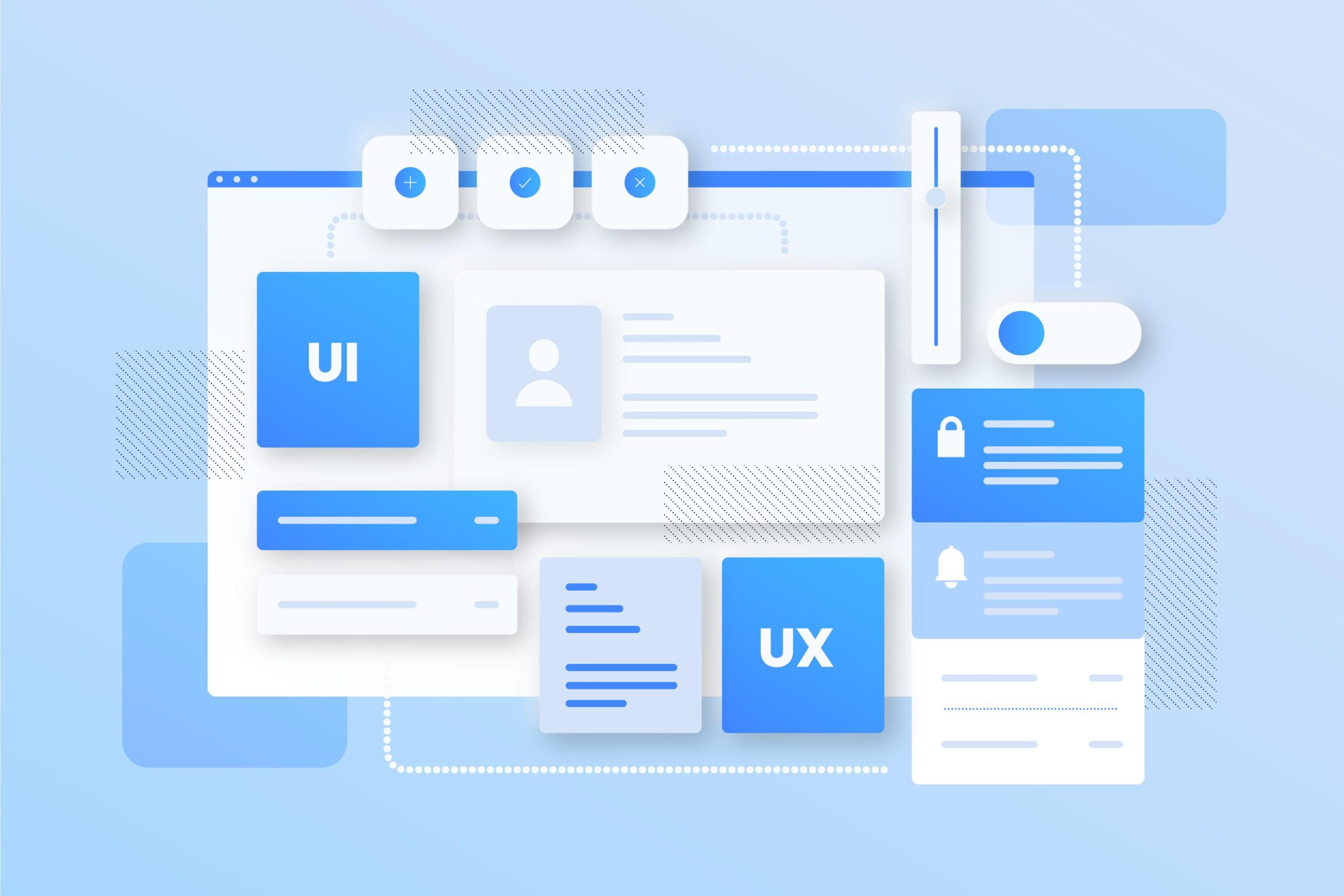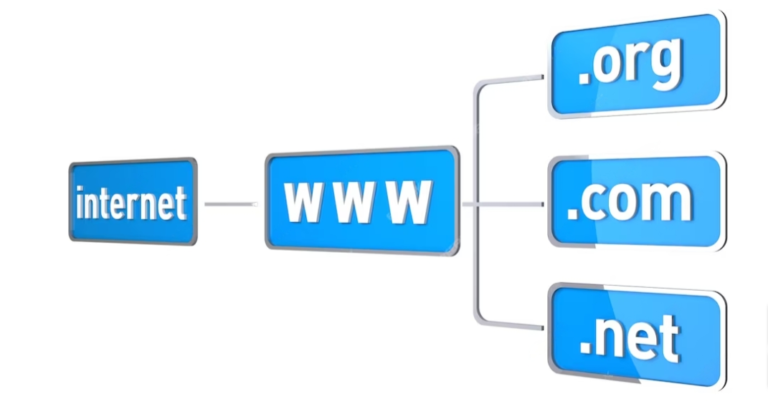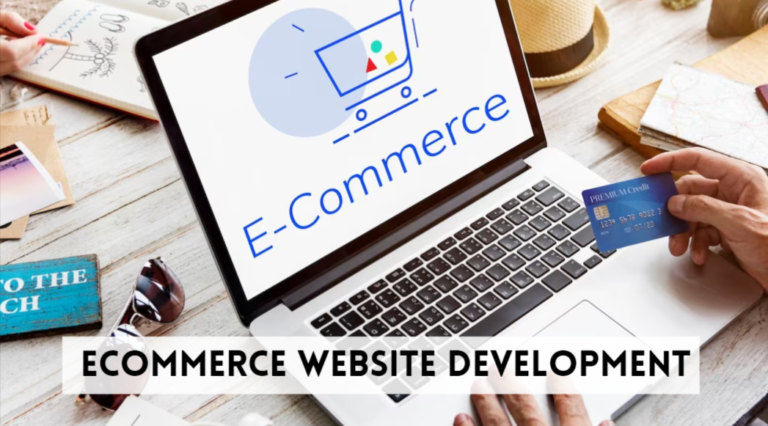How UI/UX Website Design Increases Conversion Rates
Imagine walking into a store where everything is neatly organized, signs are clear, and the aisles are easy to navigate. You’re more likely to enjoy your shopping experience and find what you need, right? Well, the same principle applies to websites. UI/UX design, like the layout of a physical store, significantly influences how visitors interact with your site. In this blog, we’ll explore how a well-thought-out UI/UX design can make your website as inviting and user-friendly as that perfectly organized store, ultimately boosting your conversion rates. Let’s dive into the world where design meets functionality to create a seamless online journey for your visitors.
UI and UX: A Dynamic Duo
Before we leap into the profound impact of UI/UX on conversion rates, let’s start by clarifying the roles of User Interface (UI) and User Experience (UX).
- UI (User Interface): UI, or User Interface, refers to the visual elements and design of a website or application that users interact with. It includes buttons, icons, screens, and other visual elements that facilitate user interaction. UI design focuses on making the interface visually appealing, easy to navigate, and user-friendly, enhancing the overall user experience. Elements like color schemes, typography, and layout contribute to creating an aesthetically pleasing and intuitive interface. In essence, UI design aims to make the interaction between users and technology efficient and enjoyable by paying attention to the look and feel of the digital environment.
- UX (User Experience): User Experience, commonly known as UX, refers to a person’s overall experience when interacting with a product, service, or system, especially concerning how easy or pleasing it is to use. In the context of websites or applications, UX design focuses on creating a positive, meaningful, and efficient experience for users. It considers factors like usability, accessibility, and overall satisfaction, aiming to meet users’ needs and expectations. Good UX design enhances user satisfaction, loyalty, and engagement by making interactions intuitive, enjoyable, and effective. It encompasses various elements such as user interface (UI) design, information architecture, and usability testing to ensure a seamless and user-friendly experience.
The Crucial Connection Between UI/UX and Conversion Rates
So, how do UI and UX design impact conversion rates? Let’s break it down.
- First Impressions Matter
Imagine a user landing on your website. The first few seconds are crucial. An aesthetically pleasing and well-structured UI captures the visitor’s attention instantly. It creates that initial positive impression that encourages users to explore further, significantly increasing the likelihood of conversions.
- Enhanced User Engagement
An intuitive UX design ensures users can navigate your website effortlessly. It reduces the friction in the user journey, making it more enjoyable and efficient. When users can easily access information or products they’re looking for, they’re more likely to stay longer, engage more deeply, and convert.
- Trust and Credibility
A polished and professional UI design goes a long way in establishing trust. Users tend to trust websites that appear credible and reliable. Consistency in design, clarity in communication through visuals, and a well-thought-out user interface contribute to building trust. And trust is a powerful motivator for conversion.
- Optimized for Mobile
With the proliferation of smartphones and tablets, mobile optimization is no longer optional. Responsive UI/UX design ensures your website looks and functions seamlessly across various devices, accommodating a broader audience. Mobile optimization is not just about adapting to different screen sizes but also considering touch-based interactions and mobile-specific user behaviors.
- Reduced Bounce Rates
High bounce rates, where visitors leave your site quickly after landing, can be detrimental to conversion rates. A frustrating or confusing user experience is a common cause of high bounce rates. An intuitive UX and visually pleasing UI can help retain visitors, keeping them engaged and decreasing bounce rates. Lower bounce rates translate to more opportunities for conversions.
- Streamlined Conversion Paths
Effective UI/UX design simplifies the conversion process. For instance, clear and prominent call-to-action (CTA) buttons, intuitive forms, and straightforward checkout processes remove obstacles and friction points. When users find it easy and hassle-free to complete their desired actions, they’re more likely to convert.
Web UI Manager and Web UI Testing
Achieving exceptional UI/UX design requires a dedicated approach. This is where a Web UI manager comes into play. A Web UI manager is a professional who oversees the entire UI design process. They ensure that the visual elements align with your brand’s identity, resonate with your target audience, and create an engaging user experience. A skilled Web UI manager can make a critical difference in achieving a design that not only looks good but also functions optimally.
In addition to UI management, Web UI testing is a critical step in the process. Web UI testing involves evaluating the user interface to ensure it functions as intended. This testing process identifies and rectifies issues related to UI functionality, responsiveness, and compatibility across different browsers and devices. It ensures that your website not only looks appealing but also performs optimally across various scenarios, further enhancing the user experience and, in turn, conversion rates.
The UX Journey: Mapping User Experiences
To truly understand the potential of UX in increasing conversion rates, it’s essential to dive into the intricacies of user journeys and experiences.
User-Centered Design
User-centered design is the foundation of a compelling UX. It involves understanding your users’ needs, preferences, and pain points. By conducting user research and creating user personas, you can tailor your website’s UX to meet the specific expectations of your target audience.
Information Architecture
Information architecture focuses on organizing and structuring content in a way that makes sense to users. A well-structured website with intuitive navigation can lead users down conversion paths with ease.
Usability Testing
Usability testing involves gathering feedback from real users as they interact with your website. This process identifies usability issues and allows for iterative improvements. A user-friendly website is more likely to guide users toward conversion actions.
Personalization
Personalization is a powerful tool in UX design. By offering personalized content and recommendations based on user behavior and preferences, you can increase engagement and conversions. Users are more likely to convert when they feel that your website understands and caters to their individual needs.
UI/UX Trends: Staying Ahead of the Curve
UI/UX design is not static; it evolves with technology and user expectations. Staying informed about the latest trends and best practices is crucial for maintaining a competitive edge.
Minimalism and Simplicity
Minimalistic design, characterized by clean lines, ample white space, and straightforward layouts, remains a popular trend. A minimalist approach simplifies the user experience and guides users toward conversion points.
Microinteractions
Microinteractions are subtle animations or feedback elements that enhance user engagement. They can be used to draw attention to important buttons or to provide feedback when a user completes an action, reinforcing positive behavior.
Voice User Interfaces (VUI)
The rise of voice-activated devices has given birth to voice user interfaces. Incorporating VUI into your design can make it more accessible and engaging, potentially leading to higher conversion rates, especially in voice search-driven scenarios.
Dark Mode
Dark mode has gained popularity due to its aesthetic appeal and reduced strain on the eyes. Implementing dark mode as an option can enhance user comfort and satisfaction, positively impacting conversions.
Wrap Up: The Power of User-Centric Design
In the fiercely competitive digital landscape, UI/UX website design stands as your secret weapon for increasing conversion rates. It’s not merely about making your site visually appealing; it’s about crafting an experience that captivates, engages, and ultimately converts visitors into loyal customers. Investing in a seamless blend of UI and UX design is an investment in the success of your online endeavors.
Whether you’re a business owner, a marketer, or a web developer, embracing the principles of user-centric design can lead to a significant uptick in conversion rates, and with it, a flourishing online presence. As technology continues to evolve, staying ahead of UI/UX trends and optimizing your website for the best possible user experience will remain essential in driving those coveted conversion rates higher than ever before.
FAQs
Q: Why does UI/UX design matter for my website’s conversion rates?
– UI/UX design directly influences how users interact with your website. An intuitive and visually appealing design enhances the overall user experience, making it easier for visitors to navigate, understand your content, and take desired actions, ultimately boosting conversion rates.
Q: How can I improve the UI/UX design of my website for better conversions without a complete overhaul?
– you don’t need a complete redesign! Simple tweaks like optimizing navigation, improving page load times, and ensuring a mobile-friendly layout can go a long way. Incorporating user feedback, analyzing user behavior, and refining the design iteratively can also make a significant impact on conversion rates.
Q: Is UI/UX design only about aesthetics, or does it impact functionality as well?
– UI/UX design is much more than just aesthetics! While a visually appealing design is crucial, the focus extends to functionality and user interaction. A well-designed user interface ensures seamless navigation, while a thoughtful user experience considers the user’s journey, making it pleasant and efficient – both contributing factors to increased conversion rates.




![6 Best Free Website Builders to Check Out in 2023 [+Pros & Cons]](https://marketscrawl.com/wp-content/uploads/2023/11/construction-building-architecture-concept-1-1-768x558.jpg)

